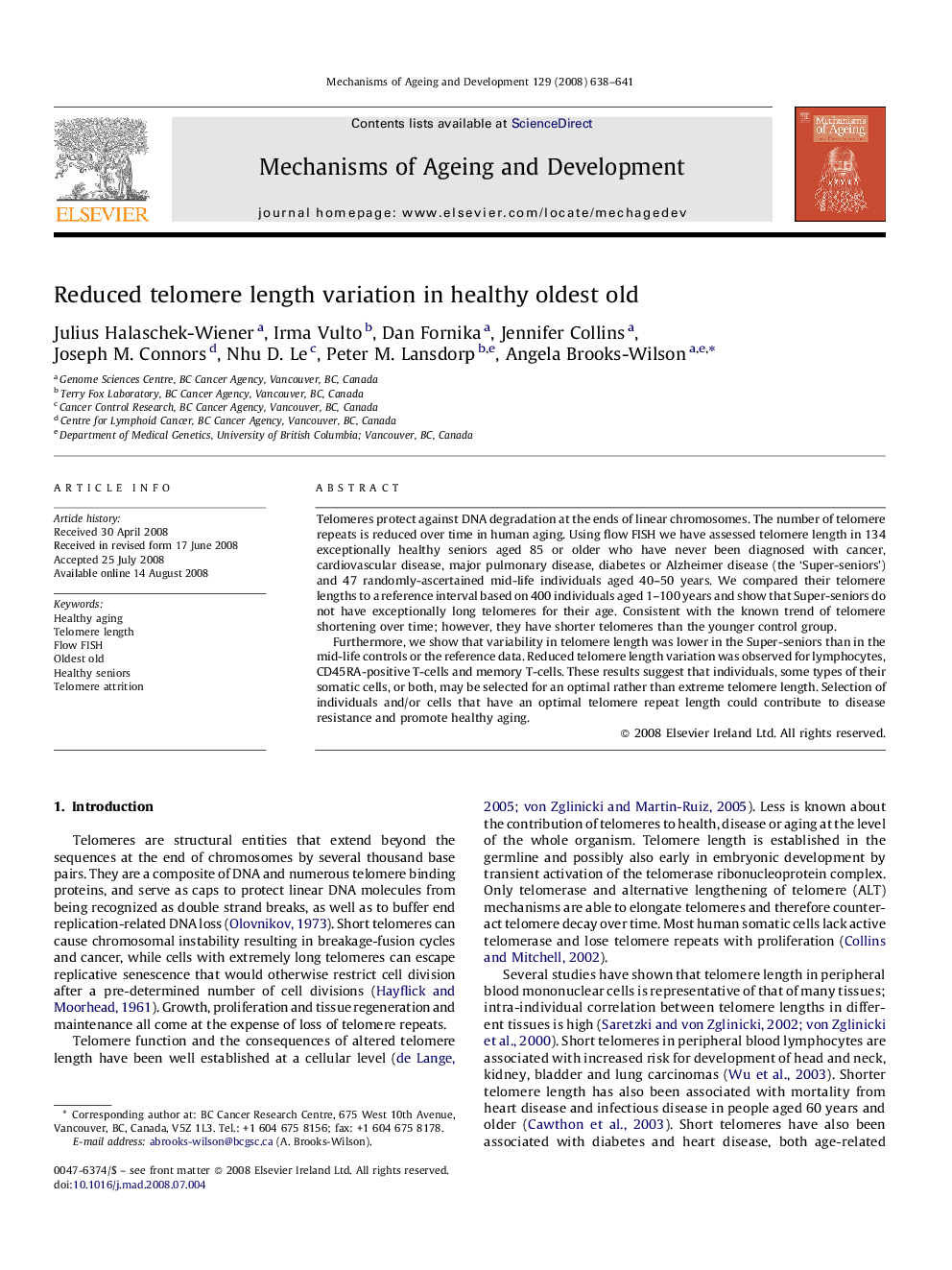| Article ID | Journal | Published Year | Pages | File Type |
|---|---|---|---|---|
| 1919845 | Mechanisms of Ageing and Development | 2008 | 4 Pages |
Telomeres protect against DNA degradation at the ends of linear chromosomes. The number of telomere repeats is reduced over time in human aging. Using flow FISH we have assessed telomere length in 134 exceptionally healthy seniors aged 85 or older who have never been diagnosed with cancer, cardiovascular disease, major pulmonary disease, diabetes or Alzheimer disease (the ‘Super-seniors’) and 47 randomly-ascertained mid-life individuals aged 40–50 years. We compared their telomere lengths to a reference interval based on 400 individuals aged 1–100 years and show that Super-seniors do not have exceptionally long telomeres for their age. Consistent with the known trend of telomere shortening over time; however, they have shorter telomeres than the younger control group.Furthermore, we show that variability in telomere length was lower in the Super-seniors than in the mid-life controls or the reference data. Reduced telomere length variation was observed for lymphocytes, CD45RA-positive T-cells and memory T-cells. These results suggest that individuals, some types of their somatic cells, or both, may be selected for an optimal rather than extreme telomere length. Selection of individuals and/or cells that have an optimal telomere repeat length could contribute to disease resistance and promote healthy aging.
